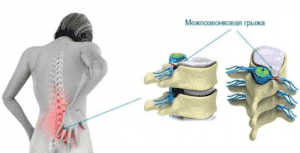Torticollis in newborns is one of the most common diseases that occurs in infants after birth. Torticollis in a child of 3 months can be both congenital and acquired pathology.
Torticollis in infants may occur in the process of giving birth, initially such a problem, the doctors may not notice, and diagnosed the infant disease after discharge from the hospital.
It should be noted that this anomaly, as torticollis is often seen in boys than in girls. As for the curvature, it is more common in right side.
What causes torticollis
Today to diagnose torticollis is quite simple. As a rule, its manifestation can be determined at early stages and easily cured. The syndrome of acute torticollis in children is the bone-muscular system of the neck, which changes the position of the head and neck is deformed. In case the newborn will be revealed deformity of the neck, but the treatment is performed, subsequently, the child may be curvature of the spine, deformation of the trunk and skull.
Signs of torticollis in infants, and its causes can be very diverse. This is because the disease can be caused by various factors such as number of pathologies of bone and muscle tissue, and directly at the time of birth. Thus, the pathology of curvature of the neck divided into congenital and acquired.

Congenital torticollis may be:
- Muscle.
Congenital muscular torticollis associated with changes in the neck muscles that lead to its normal position and movement. Usually changing functions and forms of sternocleidomastoid muscle, which attaches to the occipital and temporal parts of the skull and ends at the collarbone level. This muscle allows you to rotate and tilt the head. - Bone.
This pathology is associated with the emergence of various pathologies during the development of the cervical vertebrae. The main purpose of the cervical vertebrae is to support the neck. One of the most common pathologies of the bones of the neck are: split cervical ribs, extra ribs, wedge-shaped vertebrae (narrowing or extension of a vertebral body with one of its sides), as well as splicing of the cervical vertebrae. Treatment of this form of torticollis may require surgical intervention. If you ignore the pathology, it can lead to other diseases that are associated with the backbone and pelvis, and after the elimination of these diseases can remain scars and curvature of the spine. - Skin.
This kind of disease can be associated with insufficient elasticity or the presence of a large number of scars created by, for example, connective tissue.
As for acquired disease, it can occur in the first days of life of a child in connection with:
- inflammatory process that begins to destroy muscle tissue of the baby’s neck, replacing it with a connecting layer;
- tuberculosis of the bones, various tumors, osteomyelitis that affect the spine and other parts of the ridge;
- the deterioration of the transmission pulses to the innervation of the neck muscles (sometimes called birth trauma);
- injuries of the skin.
In addition to the above reasons, torticollis in infants may develop due to various pathologies of the jaw and salivary glands. While this disease is difficult to determine in the first days of life, and begins to manifest it over time.
Note! Purchased type of disease, usually affects only one side, and the child tilts his head to one side. If, for example, congenital muscular torticollis, pathology can affect both sides of the neck.
The main symptoms and signs of torticollis in newborns
In the early stages of the disease very difficult to determine congenital or acquired pathology in children. Remember that torticollis in infants may occur suddenly, its symptoms usually can be determined only by the doctor. The main criterion how to determine the causes, can become only the timing of the detection of rotation of the neck. Usually acquired acute torticollis doctor puts some time after the birth of a child. Better is determined by torticollis in a child of 3 months, the symptoms of this disease are pronounced. Congenital disease is often accompanied by various other disorders, for example heart disease.
Found effective remedy for pains and for the treatment of joints:
- natural composition,
- with no side effects
- efficiency, proven expert,
- a quick result.
Note! The main way of defining pathology is the assessment of the amount of the child’s activity. It’s hard enough to do so, as in the early stages after birth, a newborn can’t hold neck and quite a few moves.
Therefore, determining whether pathology occurs at the timing of 2-3 months after birth. During this period, congenital muscular torticollis, or any other type of pathology. The baby starts to learn to hold his head, and because of the difficulties that arise when properly holding the head, he tries to avoid discomfort and tilts his head. In this case, doctors may recommend wearing a special collar. If pathology was not amenable to conservative treatment, used operational.
Symptoms
The main symptoms of this pathology is:
- neck turn kid in one direction only;
- the baby’s head slightly tilted back;
- facial symmetry may be broken, one of the persons omitted. There is asymmetry of the face, which can lead to strabismus;
- appearance depression between shoulder and neck on one side;
- shoulders be beveled;
- bevel the back of the head in the direction of the pathological area.

It should be noted that these symptoms may characterize not only the presence of torticollis and other diseases, for example, hypertonicity of the muscles of the neck that arises on the basis of General hypertonicity of the body. Thus, pathology refers not to the orthopedic and neurological, to treat that much easier.
Diagnosis of the disease
At home self-diagnosis is very difficult. The same applies to the treatment of the child without consulting a doctor. The specialist can very accurately identify this disease in activity of the neck muscles, posture, and using palpation (feeling) the curved part of the neck.
In addition, physicians use diagnostic methods that allow to determine the root cause of the disease and prescribe the correct treatment.

Among the diagnostic methods doctors use:
- x-ray (allows you to see the pathology of the vertebral column);
- MRI (used for diagnosis or inspection of suspicious areas);
- examination by a neurologist (to exclude the presence of neurological cause);
- biochemical analysis of blood (allows to determine the composition of blood, presence or absence of pathological components);
- electromyography (shows the number of nerve impulses in the muscles).
Final diagnosis the doctor can only after receiving the results of the above studies. Acute torticollis in children may have implications, so the diagnosis may remain in the child forever.
How to treat torticollis in newborns
Treatment of torticollis in children should be performed since the diagnosis of this pathology. The main methods of treatment is conservative or operative method. Of course, congenital muscular torticollis, torticollis installation and other types of diseases are more amenable to conservative treatment. If child is under 1 year, the doctors are inclined to use conservative methods to use the collar, massage and complementary therapies.
Note! The more the baby, the harder it is to pursue conservative treatment, the collar, which is used in all methods of treatment are not always fully eliminates the consequences of surgical treatment. After treatment of torticollis in a child older than 2 years can stay the skewness of the head or the chest.

With regard to conservative treatment, the doctors use:
- therapeutic massage;
- exercises passive type, in which the child does not move body and limbs;
- fixation dressing, for example, the collar;
- physiotherapy.
Regarding surgery, it is the question of how to treat torticollis in this way can be answered only by experts on the basis of neglect and the characteristics of the disease. In different cases, the causes of torticollis in newborns can be specific and manifest in different ways. Thus, the method of surgery is determined individually. The reviews of this treatment can alert parents. It is worth remembering that running the installation torticollis can become a chronic disease without proper and timely treatment.
Preventive measures
Conservative treatment is primarily aimed at strengthening the muscles and fixing the position of the neck. It should be noted that torticollis in infants can succumb to prevention only after the extinction of the disease. That is, methods of preventive action to avoid occurrence of torticollis in infants are almost there.
To preventive actions include:
- use the minimum number of syringes and other tools in the management of labor;
- familiarize parents with how to properly care for the child;
- the parents comfortable bed. Torticollis in a child of 3 months can begin to progress due to uncomfortable sleeping conditions;
- timely visit of the surgeon and the orthopedist in the first months of a child’s life.
As a rule, torticollis in 3 month only starting to develop, while the symptoms may resemble other pathology. Acquired syndrome of acute torticollis in children can occur in the first days of a child’s life, while he would be virtually invisible. Photo of pathology of you can watch here.
Thus, torticollis in infants is a fairly common disease, the symptoms of which are quite difficult to detect immediately after birth. One of the best ways to eliminate the pathology of the conservative are the collar and massage. To correct torticollis alone is not possible, it can lead to undesirable consequences. How to treat torticollis in infants, and which prevention methods are best to use in a particular case, it is better to ask the doctor.




Saved as a favorite, I really like your blog!
I have to thank you for the efforts you have put in penning this blog. I’m hoping to see the same high-grade blog posts by you later on as well. In truth, your creative writing abilities has encouraged me to get my own website now 😉